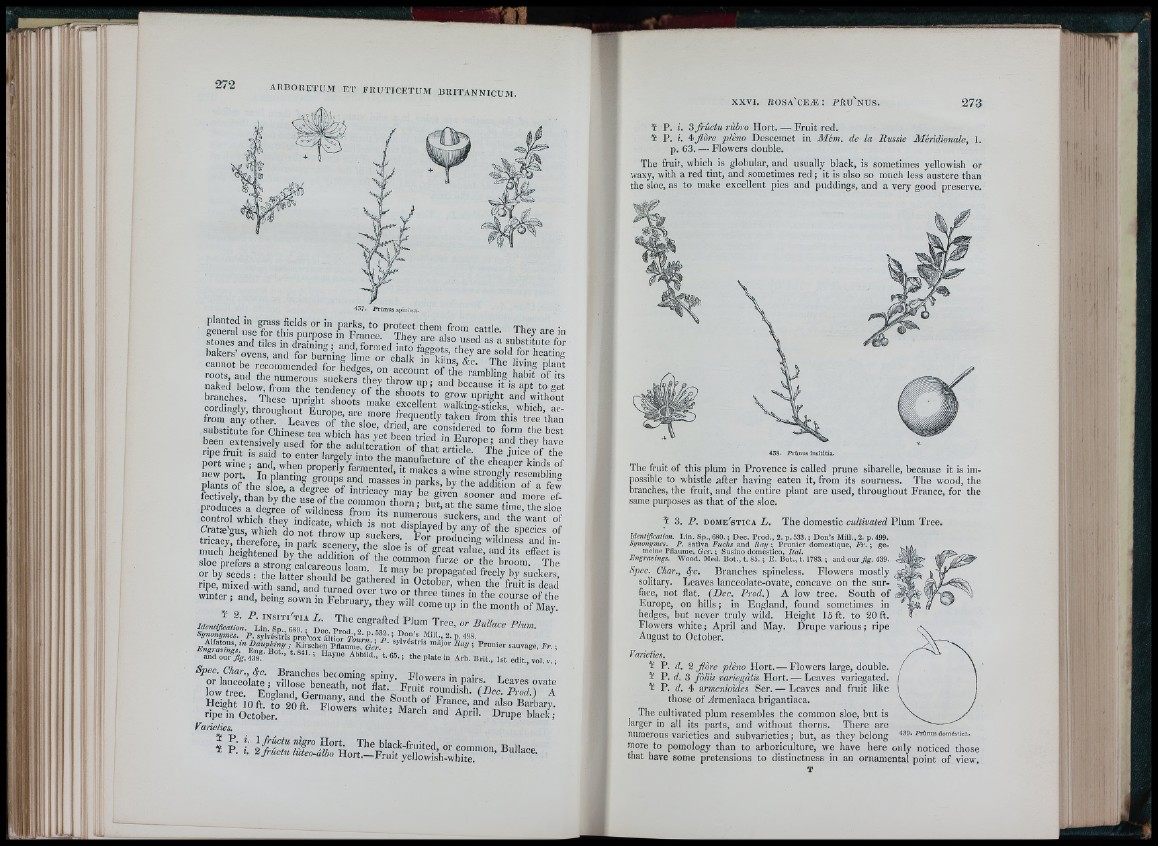
stones and tiles in drainin« ■ and fora-pd toft / also userd a“s ‘a- suVbst”itu-tev fo-r
bakers’ ovens, and for’Z r a in 'fttft
cannot be recommended for hedges on acconrt f t ft ic ‘''"î® P*“ ‘
roots, and the numerous suckers uZftto , f rambling habit of its
f t t l e Z - f t b t z î - g Z f t f t o i z i :
f tn t r o l w h ic h T e y t c t a a e f th i f t f t ®f
Cratæ'gus, which f t n o t thftowftn ®f
: X T i - r £ = H
r i p e , f t i x e d .w i t r s a t a a n d Z n e d " Z f t f t o f t ft®
w in te r; and, being sown in February, tZ y Z T li f t“ f t f t t f t Z f t Î l ï
and our z%. 438. ’’ ' ’ ’’ ^ne Abbdd., t. 66. ; the plate in Arb. Brit., 1st edit., vol. v. ;
Spec. Char., 4c. Branches becoming spiny Flowers in no;.-« r or lanceolate ; villose henpath nft f t . tj . wers in pans. Leaves ovate
Vaiieties.
¥ P. i. 3 frúctu rùbro H o rt. — F rn it red.
4 P . i. i flòre pièno Descemet in Mém. de la Russie Meridionale, 1.
p. 63. — Flowers doublé.
The fruit, which is globular, and usually black, is sometimes yellowish or
waxy, with a red tin t, and sometimes red ; it is also so much less austere than
the sloe, as to make excellent pies and puddings, and a very good preserve.
438- 2*rünus in s ititia .
The fruit of this plum in Provence is called prune sibarelle, because it is impossible
to whistle a fte r having eaten it, from its sourness. The wood, the
branches, the fruit, and th e entire plant are used, throughout France, for the
same purposes as th a t of the sloe.
¥ 3. P . d o m e ' s t i c a L . The domestic cultivated Plum Tree.
Identification. Lin . S p .,6 8 0 .; Dec. P ro d ., 2. p .633.; D o n ’s M ill.,2 . p .499.
Synomjmes. P. satlva Fuchs .and R a y ; P ru n io r domestique, Fr. ; ge-
meine Pflaume, Gcr. ; Susino domestico, Ita l.
Wood. Med. B o t., t. 8 5 .; E. Bot., 1 .1783.; and o u r 439.
Spec. Char., 4e. Branches spineless. Flowers mostly
solitary. Leaves lanceolate-ovate, concave on the surface,
not flat. (Dee. Prod.) A low tree. South o f
Europe, on hills ; in England, found sometimes in
hedges, but never truly wild. Lleight 15 ft. to 20 ft.
Flowers white ; April and May. Drupe various ; ripe
August to October.
Varieties.
¥ P. d. 2 flòre pièno Llort.'— Flowers large, double.
¥ P . c/. 3 fdliis variegdlis H o rt. — Leaves variegated.
¥ P. c/. 4 armenioides Ser. — Loaves and fruit like
those of rirmeniaca brigantìaca.
The cultivated plum resembles the common sloe, b u t is
larger in all its parts, and without thorns. There are
numerous varieties ancl subvarieties; but, as they belong «9. fWinus domftti«.
more to pomology than to arboriculture, we have here only noticed those
that have some pretensions to distinctness in an ornamental point o f view.
T
i l